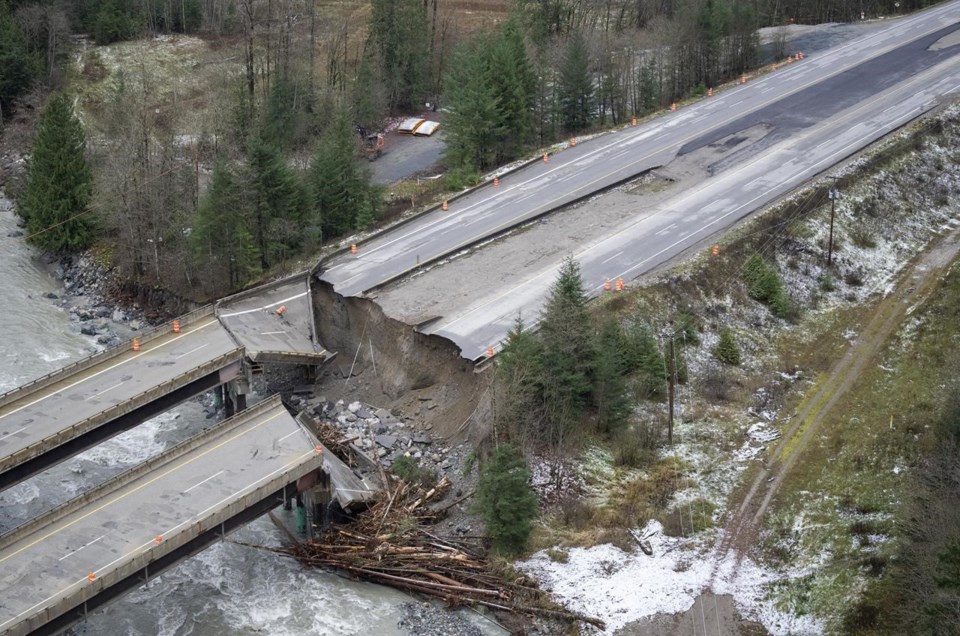VICTORIA — British Columbia's transportation minister says 130 kilometres of highway that was severely damaged by flooding two years ago is now more resilient to extreme weather.
Rob Fleming said Wednesday that the stretch of the Coquihalla Highway, or Highway 5, between Hope and Merritt, B.C., is an example of a "new normal" for how infrastructure needs to be built.
"Our infrastructure has to be able to withstand extreme weather conditions. This is the new normal for the safety of our residents and the movement of goods throughout the province. This is an important infrastructure priority for British Columbia," he said.
A series of atmospheric rivers in November 2021 triggered mudslides and washed out highways and bridges that blocked almost every route between B.C.'s Lower Mainland and the Interior.
Fleming said the cost to repair the damage caused to Highways 1, 5 and 8 is somewhere between $1 billion and $1.5 billion, but 70 to 90 per cent of that is expected to be covered by the federal government's disaster assistance program.
Jennifer Fraser, executive project director for the highway reinstatement program, said six bridges on the Coquihalla were replaced over 17 months.
She said some bridges have been made longer to allow more water to pass underneath, and crews strategically placed rocks and vegetation to help fight erosion.
Fraser said the bridges are also on stronger supports, with the longest pile being driven 65 metres into the ground.
Fleming said the province's other corridors have been examined for vulnerabilities to extreme weather, and the government has set aside funding specifically for projects like improving drainage and "future-proofing" infrastructure.
"So those corridors are understood (as to) where those vulnerabilities are," he said.
"More work will be done, but the qualified engineers that we have in our ministry and the contractors we use, constantly evaluate where those vulnerabilities may be and prescribe what kinds of fixes and upgrades to that infrastructure might look like."
Fleming praised the work of crews who were able to begin allowing commercial vehicles back on the Coquihalla 35 days after the disaster, successfully meeting a goal to have access back by Christmas.
He said 300 workers moved more than 400,000 cubic metres of gravel, rock and other materials to repair and reopen the highway.
"The companies and workers that pulled off this amazing accomplishment, who built a bridge every two and a half months during construction, have our everlasting gratitude as a province," he said.
"They worked non-stop for two years and now one of our most important trade corridors is better than ever able to withstand future climate events."
This report by The Canadian Press was first published Nov. 15, 2023.
The Canadian Press



